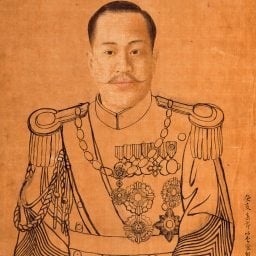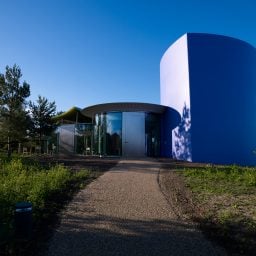Haneyl Choi’s sculptures evade easy categorization; the range of materials, methodologies and motifs that he deploys across his practice challenge viewers to question assumptions about contemporary art and sexual identity. Nowhere is this more apparent than in his recent solo show, “Tae,” presented jointly at P21 and Gallery2.
Comprising some 40 works installed across two gallery spaces in Seoul, it is the most representative survey of his expansive practice to date, tracing the trajectory of his irreverent engagement with the human form and new approaches to dematerialization through the use of photography and digital AR filters.
The exhibition’s title reflects Choi’s active engagement with nuanced meanings and interpretations throughout his work, adopting the Korean word “tae” (태) and its corresponding Chinese character (態), alongside an English approximation of their meaning. “It’s really hard to translate to English,” Choi said. “The Chinese character means ‘form,’ but I think the most similar word is ‘manner.’”
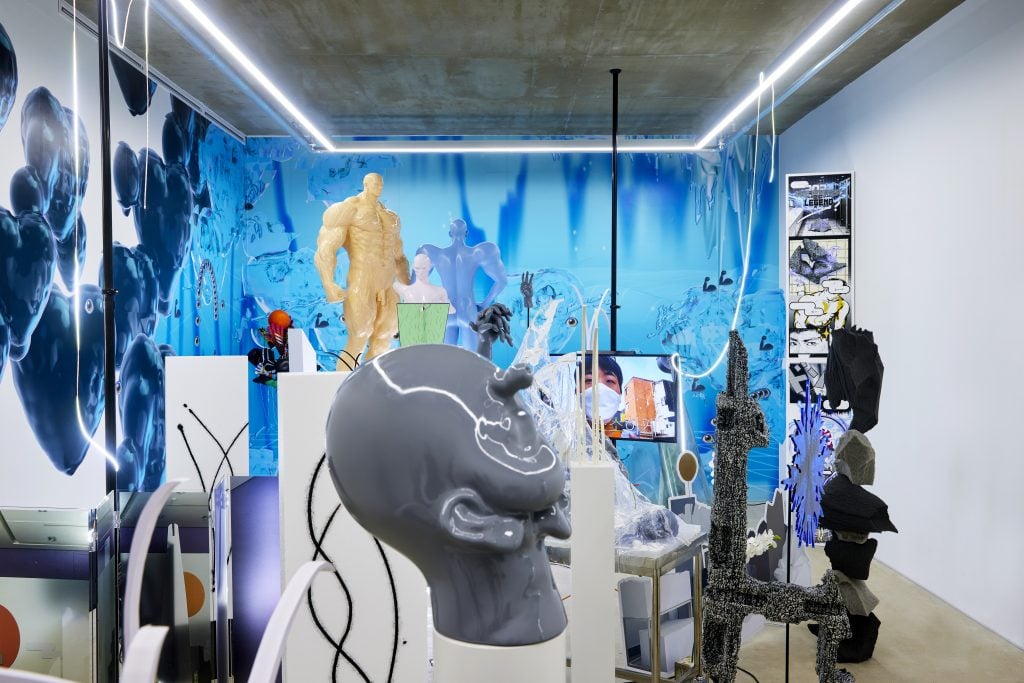
installation view of “Manner” at Gallery2 in Seoul. Photo: Sangtae Kim, courtesy of Gallery2 and the artist.
When pressed to explain the difference between the two definitions, Choi became reticent, preferring instead to use the word in context. He described an idiom in Korean, “tae-ga nanda (태가 난다),” which means to have a good appearance.
“If there’s one item of clothing and two men both try it on, one person might look great wearing it while the other doesn’t look good,” Choi said. “‘Tae’ means appearance in this sense, but of course the word also includes so many other meanings because of its Chinese cognate.” Through this trilingual nomenclature, Choi invokes elements of attitude, vibe and character as corollaries of “form” and qualifiers of “manner.”
Such nuances are central to Choi’s ongoing inquiry into the nature of appearance itself and how perception is moderated by social mores and conditioned responses to visual signifiers. Indeed, images are at the core of his sculptural practice, both in terms of how they are constructed as well as consumed, in conjunction with an abiding interest in queer identity and representation. He rejects any singular definition or embodiment of gay sexuality, however, instead proposing pluralistic abstractions that resonate along a variable spectrum of queer wavelengths.
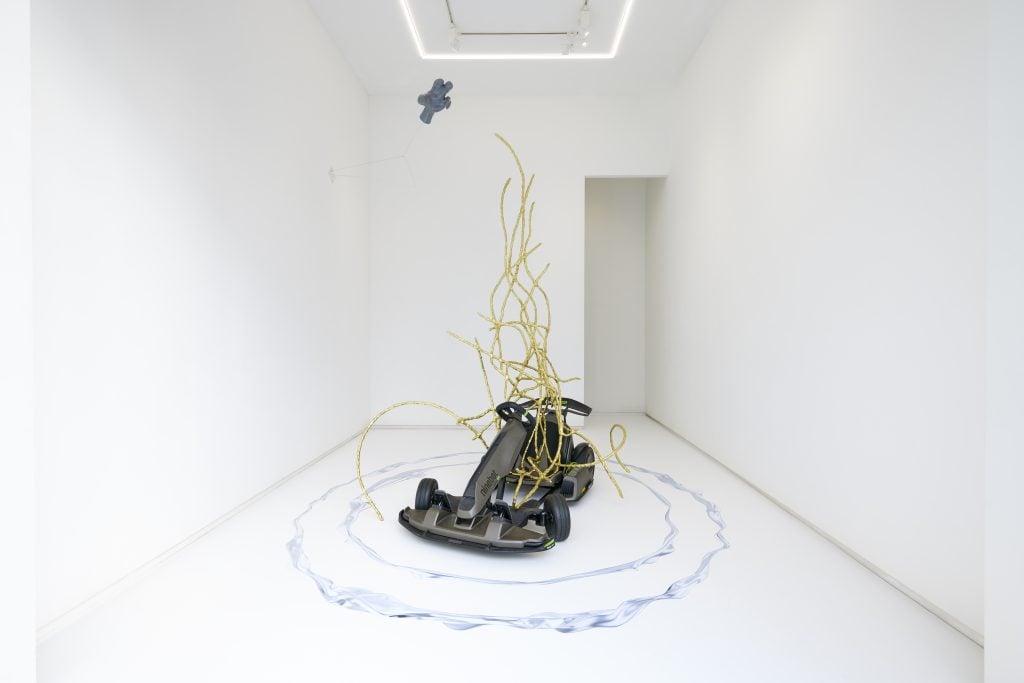
installation view of “Manner” at P21 in Seoul. Photo: Sangtae Kim, courtesy of P21 and the artist.
As an openly gay artist living in a conservative country like Korea, Choi is keenly aware of the ways that images are used to perpetuate stereotypes. But he also believes in the power of images to alter perceptions and perhaps even lead to meaningful change.
“Korea is a really famous and rich country, but life for gays or any minorities is not good here,” he said, noting that “there are so many gaps between real life and art.” Anti-LGBTQ discrimination is widespread in Korea, which lacks legal protection for gender and sexual minorities, with repeated calls for legislative reform having gone unheeded by the National Assembly for more than a decade.
In the Korean art world, it is rare for artists to publicly assert their sexuality through their work, although this is something that motivates Choi, according to his dealer Soo Choi of P21. She considers his practice as a form of activism, explaining: “With that kind of purpose in mind, I think he is more driven that other artists—or driven for different purposes—as a gay person and also as a sculptor.” In so doing, he “relates being a sculptor to being a minority in society and the art world.”
In 2020, Choi explored the duality of being a gay sculptor in Korea during his gallery debut at P21, “Siamese.” For this show, he appropriated iconic forms by the pioneering abstract sculptor Kim Chong Yung (1915-82), “destroying him with my queer sexuality,” as Choi described. The exhibition proposed a bold revision of Kim’s non-objective approach to representation, introducing the dialectic of queer formalism to subvert the canonical identity of art historical objects.
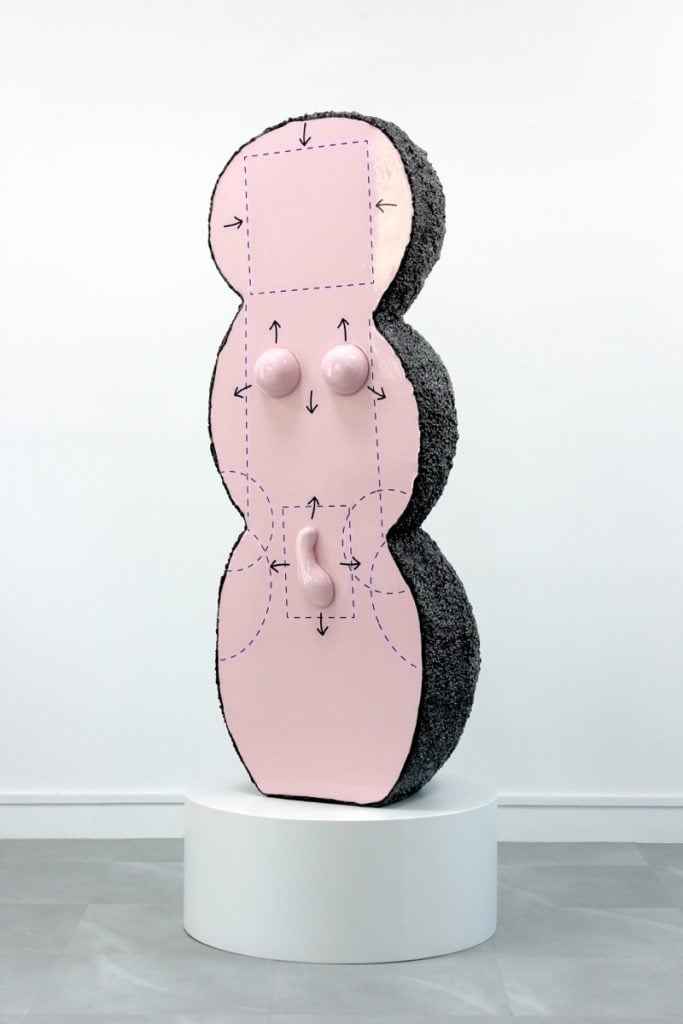
Haneyl Choi, The Other Part of His Siamese 2 Hermaphrodite (2020). Photo: Cheonho Ahn, courtesy of P21 and the artist.
“No other commercial gallery had shown anything like this before in Korea,” Soo Choi said, recalling her own initial trepidation at showing such an overtly sexualized body of work. But sales were strong, with around half of the works sold during the show and the remainder placed with collectors after the exhibition closed.
Following the success of “Siamese,” Choi quickly became one of the most in-demand artists in the Korean contemporary art world. The following year, he mounted his first institutional show at Arario Museum in Seoul and participated in an additional 14 group exhibitions, both at home as well as overseas.
When P21 presented a set of new works by Choi in a solo booth at Art Basel Hong Kong 2021, they were snapped up by collectors from China, Japan and Indonesia, demonstrating his oeuvre’s broad appeal in the international market and validating his rapid ascent within the Korean contemporary art scene. Another upshot of this strong interest was Choi’s increasing trust in his dealer, particularly in regard to her intensifying pleas that he stop destroying his unsold works.
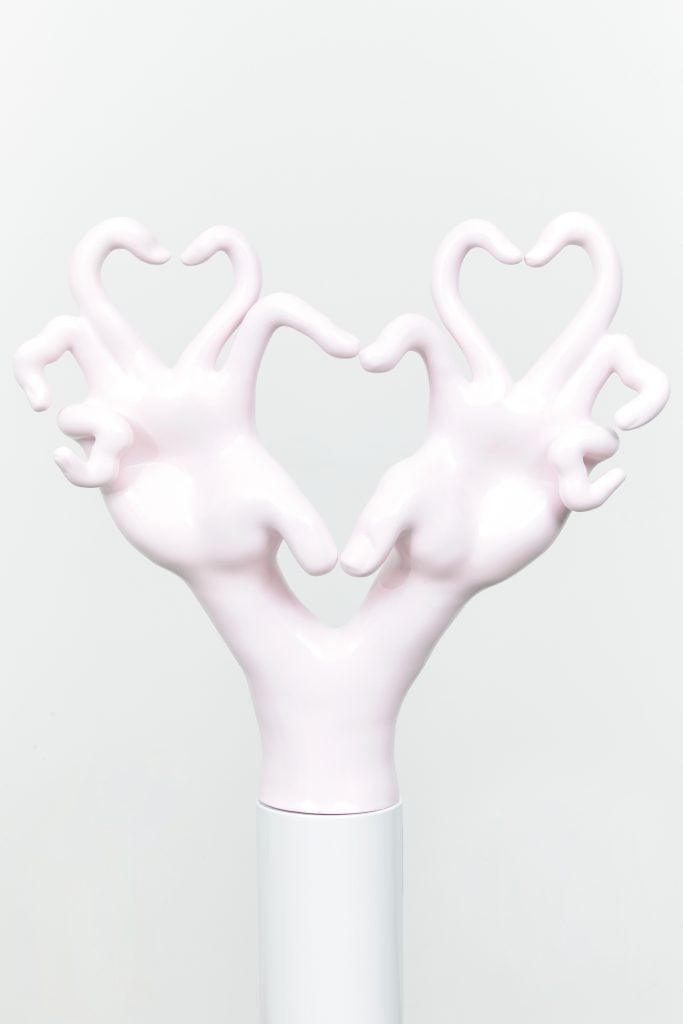
Haneyl Choi, H1 (2022). Photo: Sunghyun Joe, courtesy of P21 and the artist.
“I don’t really care about throwing away my work because, whenever I finish a sculpture, it’s not mine anymore,” Choi reasoned when asked about this. “I make the sculpture for its own sake, and then it leaves the studio and meets a new owner.” Given the size of his works, which are typically executed at human scale, Choi has long struggled to find storage space that would allow him to keep any unsold inventory.
One way that he has sought to remedy this situation in recent years is by pursuing a dematerialized approach to sculpture that adapts photography to suit his creative ends. As Choi sees it, since a photo can exist as a digital file rather than a concrete object, there is no material to be thrown away and no physical waste generated. Thus, by combining photography and sculpture together, “it became like a game” for Choi: he typically creates a sculpture first and then either adds or removes clothing or other layers before presenting the object and the image side-by-side, prompting questions about definitions of sculpture itself.
In addition to his exhibition at P21 and Gallery2, Choi recently opened a two-person exhibition at the Ilmin Museum of Art, “The Other Self,” a collaborative project with sculptor Osang Gwon. It’s a natural partnership between the two artists,each of whom has become known for actively expanding the parameters of their medium and interrogating commonly held beliefs regarding sculpture’s physicality and structure.
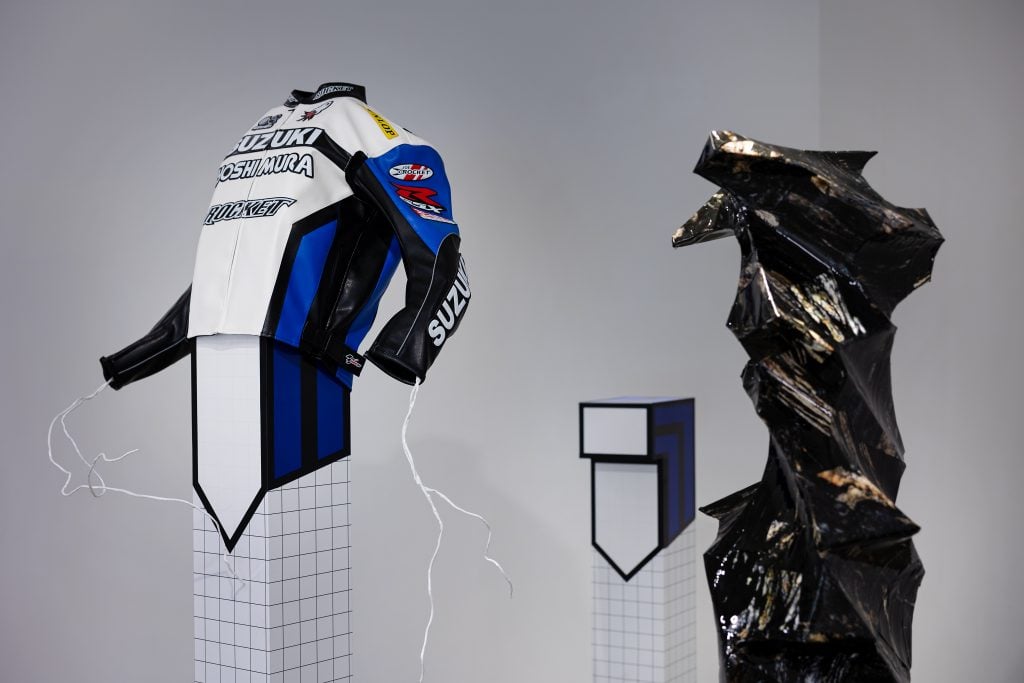
installation view of “The Other Self” at Ilmin Museum of Art in Seoul. Courtesy of the Ilmin Museum of Art and Seoul Metropolitan Government.
Since 1998, Gwon has developed a body of work he calls photography-sculptures, reconstructing subjects by modeling their three-dimensional forms with lightweight materials and then covering their surfaces with hundreds of individual photo fragments. In many ways, Gwon can be seen as Choi’s conceptual predecessor, although this exhibition is the first time that their works have been so explicitly linked in a public setting.
“The singular point of Choi’s practice is his belief that sculpture will abandon its physical properties and gradually go to the tendency of non-materialization,” said Regina Shin, who curated the Ilmin Museum exhibition. She added that Choi’s “exploration into other dimensions and the future form of sculpture as an autonomous medium create a colorful network of meanings.”
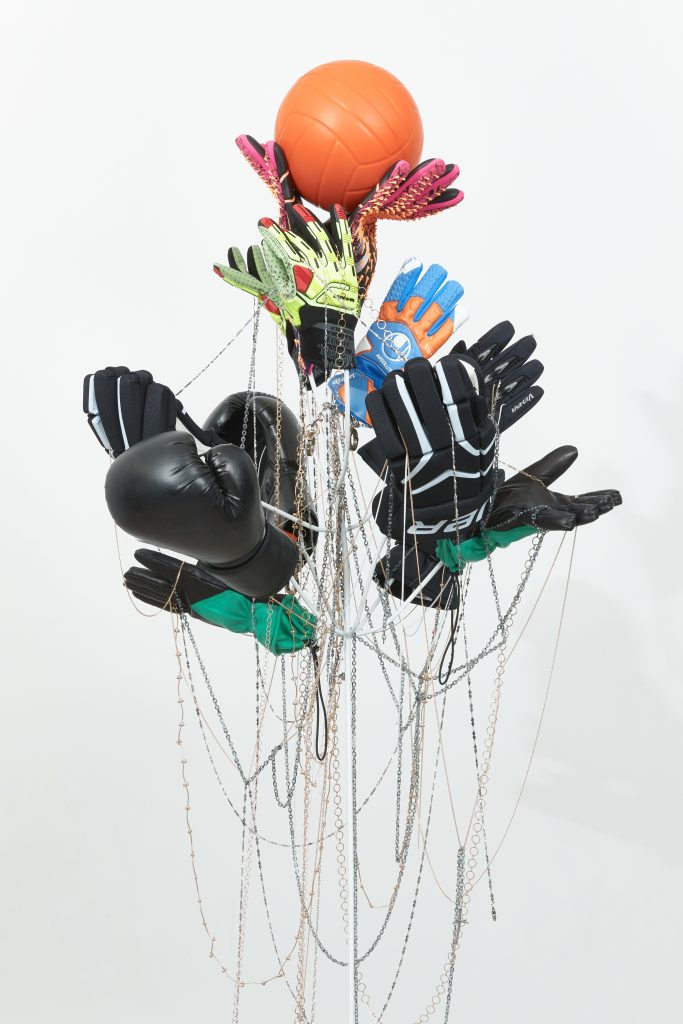
Haneyl Choi, H6 (2022). Photo: Sunghyun Joe, courtesy of Gallery2 and the artist.
By rejecting any monolithic definition or embodiment of sculpture, Choi’s pluralistic abstractions propose a subjective analogue of queerness itself, something which he calls his “life homework.” Rather than address this topic head-on, however, he does so in a way that allows for an inclusive assertion of queer sensibilities by steering clear of any social context.
“I want to show that gay artists can talk about form,” he said, “I want to add something to the history.” By all accounts, Choi’s contribution to prevailing narratives of both sculpture and queerness alike is his advocacy of ambiguity in an increasingly non-binary world.









